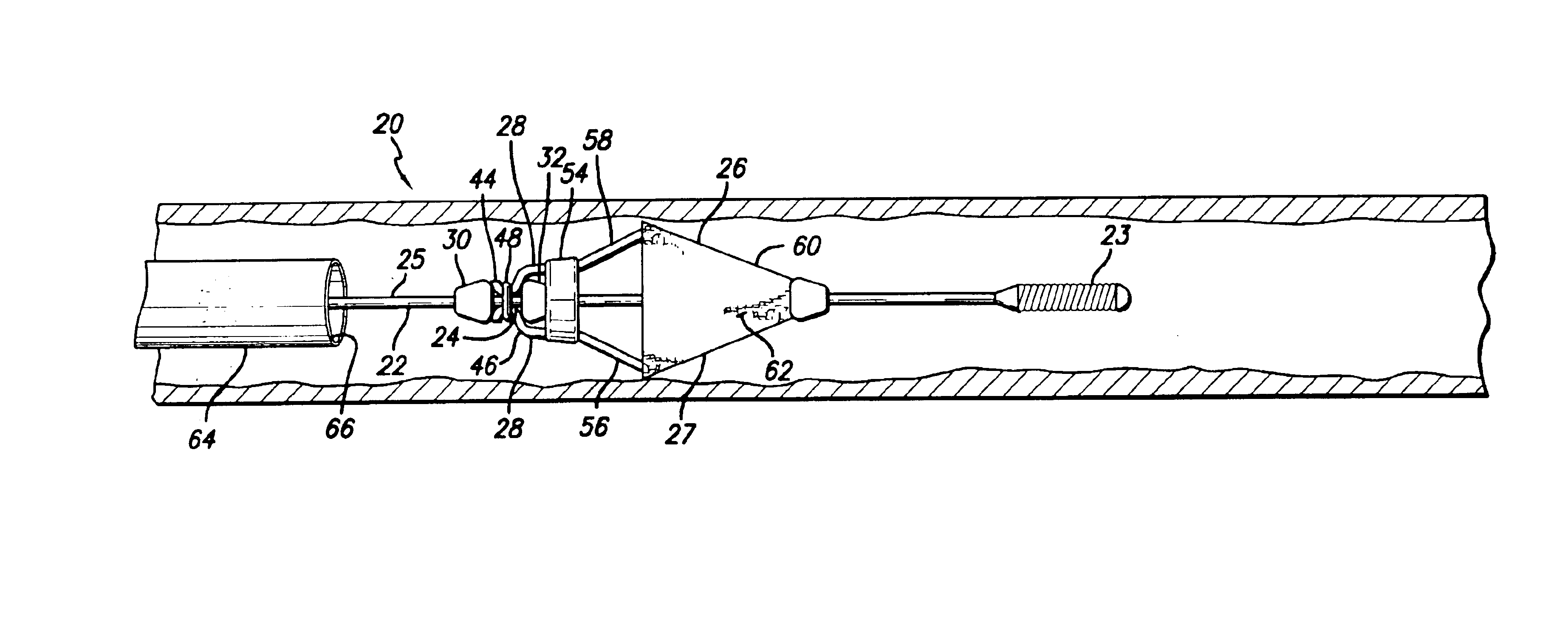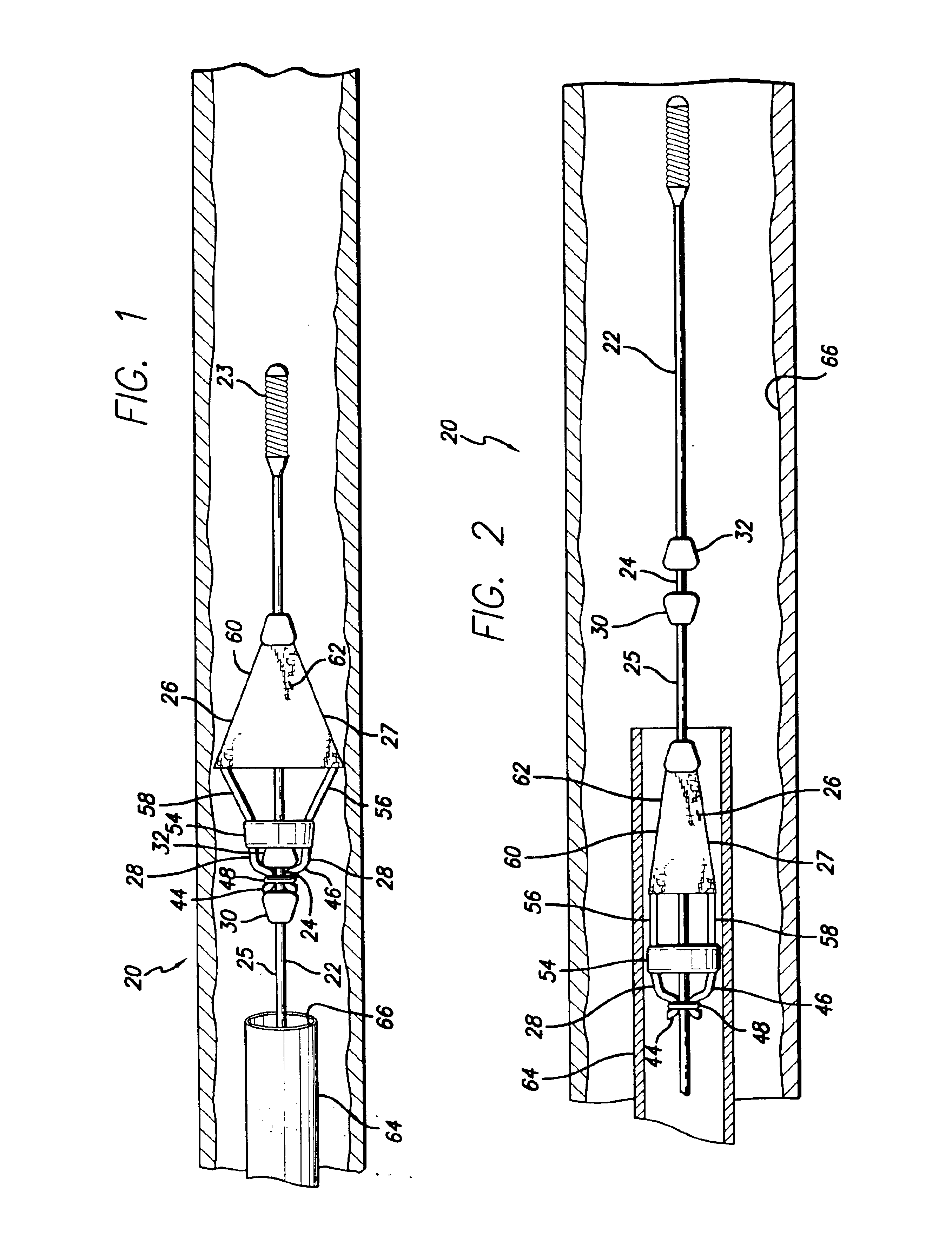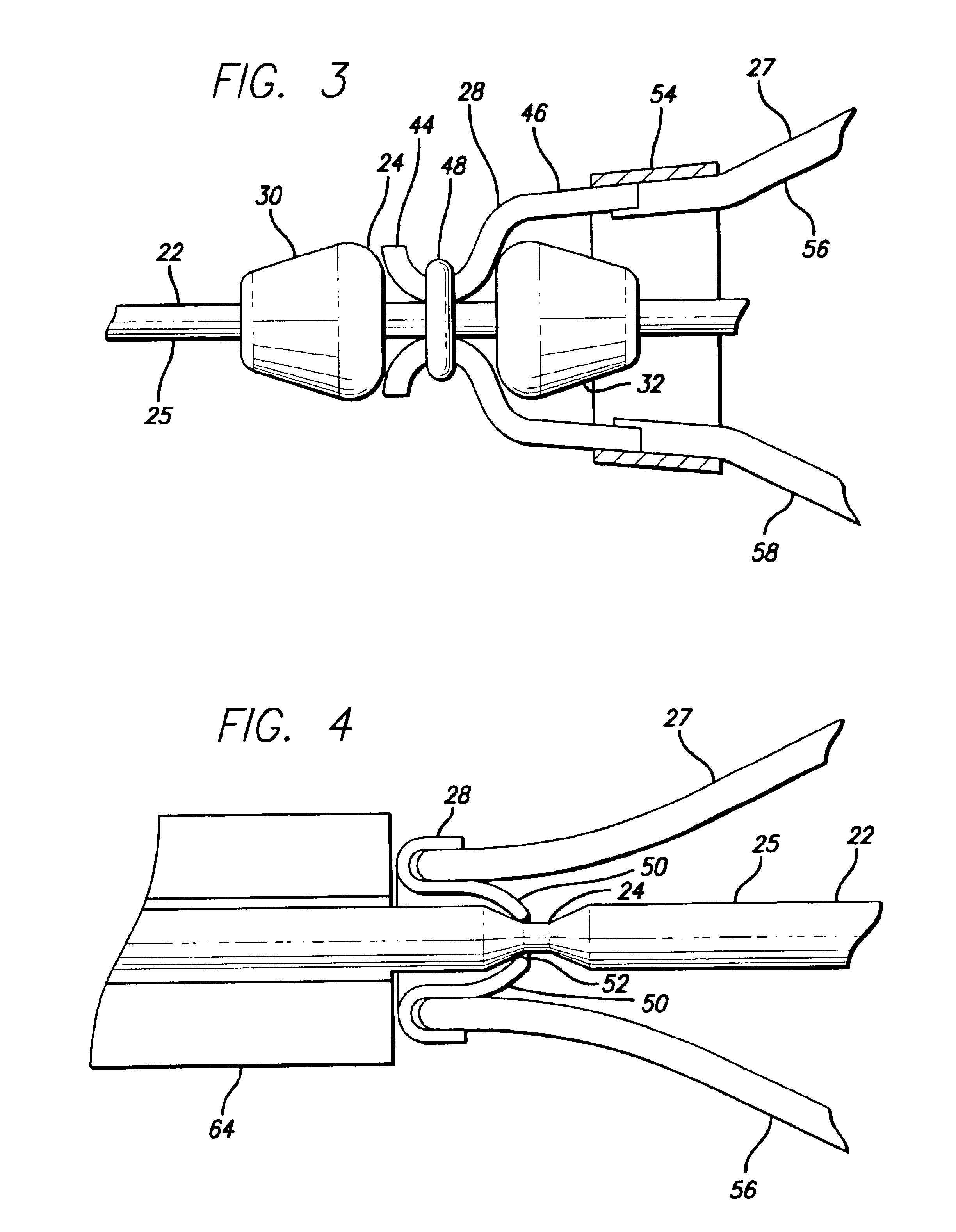Intraluminal delivery system for an attachable treatment device
a technology of intraluminal delivery system and treatment device, which is applied in the field of intraluminal medical devices, can solve the problems of significant health problems of patients, damage to organs or limbs, and limited number of procedures, and achieves the effect of convenient crossing
- Summary
- Abstract
- Description
- Claims
- Application Information
AI Technical Summary
Benefits of technology
Problems solved by technology
Method used
Image
Examples
Embodiment Construction
The present invention relates to treatment devices for vascular disease. The invention permits a treatment device such as an embolic protection cage to be securely affixed to a guide wire either during or just prior to the intraluminal procedure. In general terms, the treatment device may be advanced over the guide wire until it reaches a recess in the guide wire at which point the treatment device grasps the guide wire.
A delivery system 20 conforming to the present invention may include a guide wire 22 having a recessed portion 24, and an embolic cage 26 having at least one detent 28. The embolic cage is preferably mounted onto the guide wire in such a configuration that the embolic cage freely slides over the guide wire. Once the detents on the embolic cage engage the recessed portion of the guide wire, however, the embolic cage is securely affixed and will advance and retract with the guide wire.
Because of the environment that guide wires are used, and the purpose they serve, it ...
PUM
 Login to View More
Login to View More Abstract
Description
Claims
Application Information
 Login to View More
Login to View More - Generate Ideas
- Intellectual Property
- Life Sciences
- Materials
- Tech Scout
- Unparalleled Data Quality
- Higher Quality Content
- 60% Fewer Hallucinations
Browse by: Latest US Patents, China's latest patents, Technical Efficacy Thesaurus, Application Domain, Technology Topic, Popular Technical Reports.
© 2025 PatSnap. All rights reserved.Legal|Privacy policy|Modern Slavery Act Transparency Statement|Sitemap|About US| Contact US: help@patsnap.com



